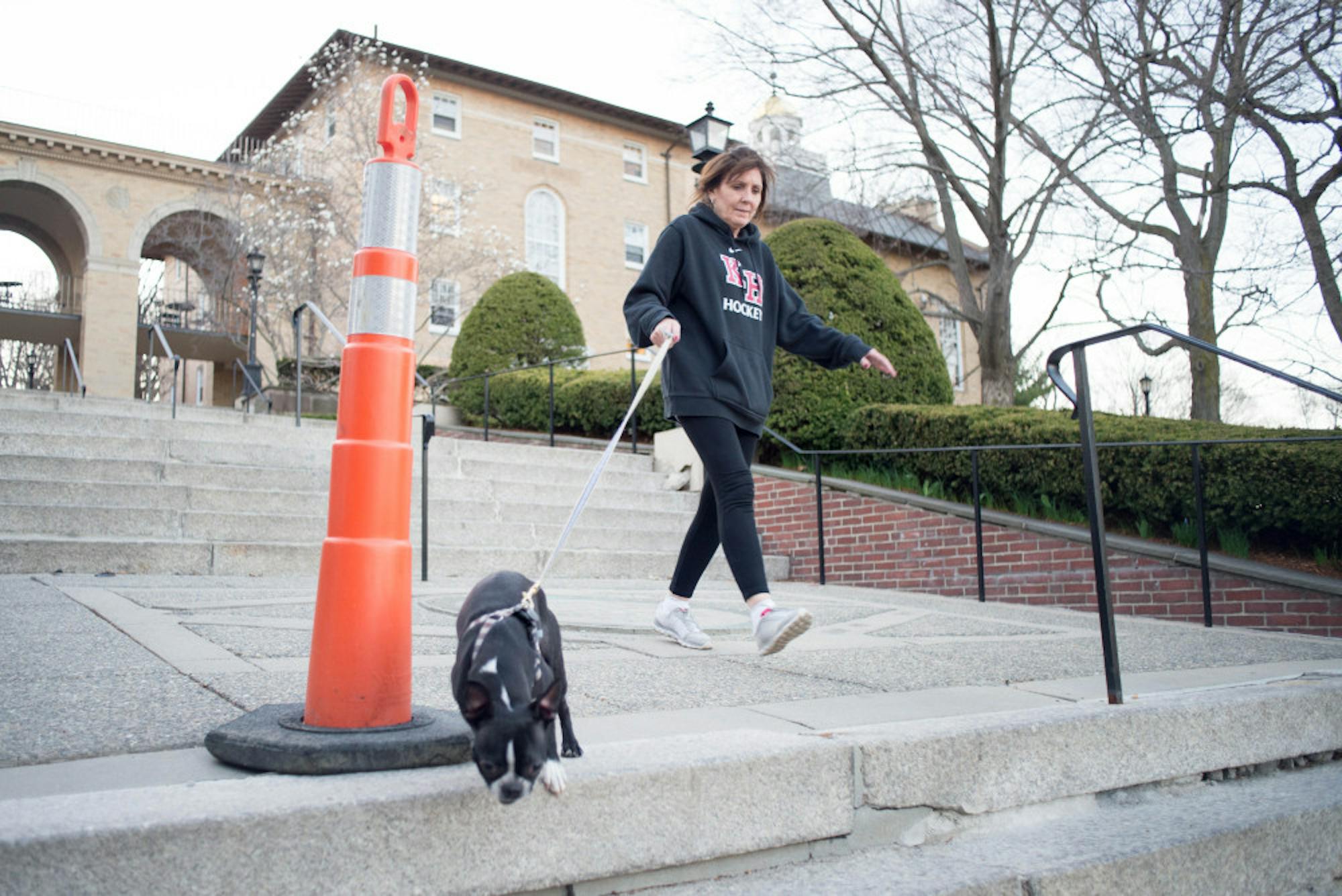While school was out of session for the summer, work continued on campus in the form of several construction projects. In addition to renovating myriad residence halls and university-owned homes, the university funneled resources into three major ventures: construction of the Science and Engineering Complex (SEC), refurbishing the Memorial Steps and modifying the Central Energy Plant.
According to University Energy Program DirectorRandy Preston, the plans to update the Central Energy Plant, located nearDowling Hall, have been years in the making.
“The old boiler plant is about 60 years old, and it’s not in great shape,” Preston said. “We need more reliable utilities on campus.”
Preston explained that after consulting with outside contractors to determine whether or not the project would be feasible, university trustees approved the plan to modernize the facility.
He identified the project’s objectives as increasing efficiency, reducing the costs associated with running utilities on campus, equipping the campus with the necessary tools to sustain operations despite adverse conditions, reducing greenhouse gas emissions and bringing infrastructure up-to-date.
Specifically, the new energy plant will incorporate a new system based in cogeneration, a process in which fuel is used to make electricity and, in turn, excess heat and steam from the power generation process supply heat for buildings. This system will be more efficient, both in terms of energy usage and cost, according to Preston.
“For the same amount of fuel we use for the boilers, we’re getting two products instead of one,” he said. “We will use less electricity and save money in the process, as well as reduce greenhouse emissions on campus by 20 percent.”
Preston went on to detail how the new system will leave Tufts better equipped to cope with adverse conditions. In the event of a storm as bad as Hurricane Sandy, he said, the university would need to sustain campus operations even if connections to external resources were lost. He emphasized that these changes will allow the university to become more self-sufficient.
Construction is slated to be completed in the summer of 2016. Having installed utility lines this summer, the construction team is now focused on building up the plant itself, according to Preston. In the meantime, the university has gone to great lengths to ensure that nearby neighbors, both on and off campus, are able to go about their affairs without much disruption, aside from the rerouting of pedestrian traffic near the energy plant.
Preston believes that the end result will make the efforts of all parties worthwhile.
“I certainly appreciate the forbearance of students and faculty in getting this complicated piece of work done,” he said. “We take very seriously the university’s normal business and we are trying to make a positive change. We think at the end, everybody will be very pleased with [the energy plant].”
Construction on the SEC, on the other hand, is projected to be completed by the start of the 2017 school year. The 79,000 square foot addition located behind Robinson Hall and Anderson Hall is meant to house laboratories with the intent of promoting interdisciplinary research. For the time being, most research in the SEC will be focused in disciplines such as environmental science and neuroscience.
The Memorial Steps, which lie between Paige Hall and Miner Hall, also saw renovations over the summer, and are scheduled to be completed by the end of November. Construction work includes installing a snow-melt system beneath the stairway, as well as a new foundation to make the structure more durable.
In an April email to the Daily,Senior Manager of Project Administration Ray Santangelo confirmed that the heavy snowfall -- this past year in particular -- has damaged the steps.
“The need for a tremendous amount of ice melt damages the stairs significantly,” Santangelo said. “The new stairs will have piping under them that will aid with snow melting, requiring less shoveling and less salt.”
For students such as sophomoreHayley Carabello, however, the construction on the Memorial Steps has proved to be a frustrating obstacle when navigating a path across campus on a time-tight schedule.
“I definitely think it’s impeding my ability to get to class in time, especially when I need to cut across campus when I have 15 minutes to go between classes,” Carabello said. “I really think the university should have had it done [before school started] because it is definitely a giant issue for many students, especially engineers.”
Not all summer projects have continued into the year. Many revitalization projects involving various residence halls were completed during the summer months. Some of the most notable changes include those made to Richardson House, the all-female on-campus residence which houses 42 students. Workers renovated the building's kitchens, bathrooms, laundry room and common areas and added new siding and windows.
Phase One of a two-year renovation plan for Stratton House, too, was completed before students arrived. The senior dormitory received new windows and a new roof. Workers also cleaned the building and repointed its bricks. Phase Two will be completed next summer with improvements to the foundation and the first floor.
Carpenter House, which lies on Winthrop Street, was also revamped with renovated bathrooms, kitchen and common rooms. A new sewer line was also installed there.
More work was completed on the 92 Professors Row building -- currently occupied by the Sigma Phi Epsilon (SigEp) fraternity. The house, built in 1875, has a refurbished floor as well as upgraded bathroom facilities, kitchen and common areas.
Sophomore Josh Ferry, who is a resident in the SigEp house, explained that, since the university owns the home, the onus falls on the school rather than on the fraternity brothers to take care of these larger maintenance issues.
“The house woodwork essentially needed repair," Ferry said. "Personally, I couldn’t be happier with what was done."
University continues construction after summer recess

A resident walks down the Memorial Steps, which are being rebuilt after suffering heavy snow damage last winter.





